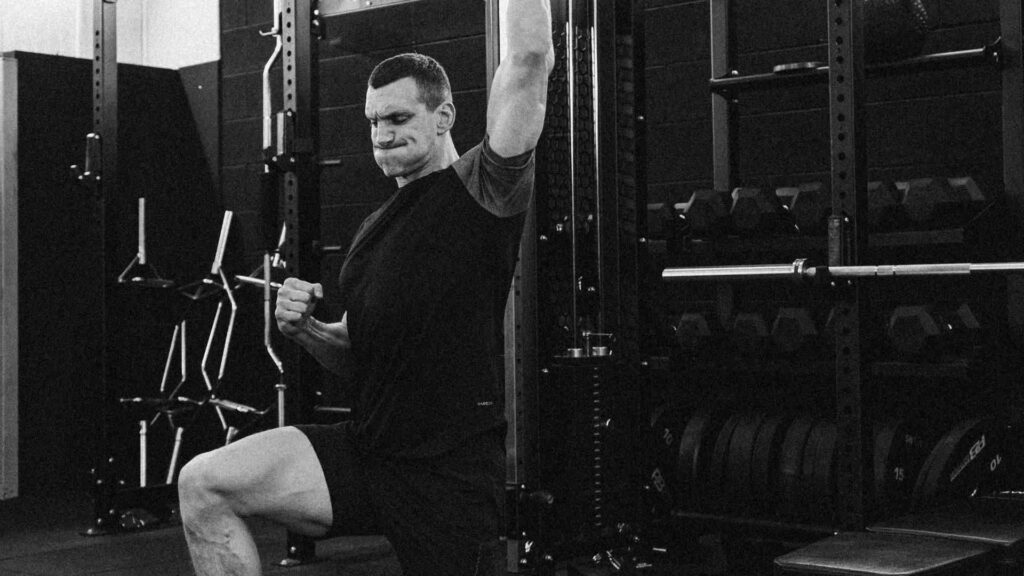Rugby is a sport based on collisions, speed, and relentless effort. But behind every big tackle, lightning-fast sprint, or dominant carry lies one vital element: power. More than just raw strength, power is your ability to exert force quickly, and in rugby, that’s what turns strength into a match-winning performance.
This is where peak power plays a key role. It forms the basis of explosive rugby performance, and without it, strength alone won’t lead to dominance on the pitch.
At SW7 Academy, we focus on developing and measuring peak power using Remaker’s VBT tech (velocity-based training) and data-driven methods. That way, you’re not just training hard, but training for results that genuinely transfer onto the pitch.
What is Peak Power?
In rugby, it’s not enough to be strong; you must be fast. That’s exactly where peak power comes into play. Power or explosiveness is the capacity to generate high force rapidly. Power is determined as force multiplied by velocity, and it is crucial in rugby performance.
In practical terms, peak power is the maximum amount of force you can produce in the shortest amount of time. That quick application of strength, not just the strength itself, is what sets a dominant carry or line break apart from simply staying upright.
We combine precision with performance. We structure our programmes with purpose and intensity, using velocity-based training (VBT) to gather real-time data on bar speed, jump height, and force output. This isn’t guesswork; it’s intelligent, responsive training informed by metrics.
How Do We Measure Power?
Power in sport combines force and velocity, assessed via bar speed, jump height, and force profiles, showing how athletes convert strength into explosive actions. Velocity-Based Training (VBT) uses real-time speed tracking, adjusting intensity based on daily readiness for more precise power measurement and training.
Power is crucial in all sports, aiding sprinting, jumping, and agility. As a review notes, power output is key to success in team sports. In rugby, peak power links to sprint speed, jump height, and contact effectiveness. Using VBT to assess and improve these ensures players translate gym effort into on-field explosiveness. For more information on training for power, visit our blog.
How VBT Tech Works
Velocity-Based Training (VBT) uses devices like sensors to measure lift speed in real time, helping coaches regulate intensity within optimal velocity zones for power development. Unlike traditional methods, VBT adapts to daily readiness fluctuations, adjusting loads for safe, effective training.
This technology benefits rugby by monitoring velocity through Velocity Based Training (VBT), helping coaches set speed targets and tailor training. It guides individual players or groups, like grinders or fast backs, on when to focus on speed. VBT’s instant feedback promotes maximal effort and detailed data analysis, improving performance at optimal speeds.

How to Build Explosive Power for Rugby: Training
Explosive power in rugby develops through a mix of heavy strength training, fast lifts, plyometrics, and speed drills in a structured programme. The goal is to condition the body to use strength quickly in matches. Research indicates that when done with proper intensity and volume, these methods improve performance.
At SW7, we integrate these elements into our programming so players can consistently develop the kind of power that translates directly to rugby. From heavy + fast lifts in the gym to sprint work on the field, every session is designed to maximise explosiveness and performance transfer.
For a detailed overview of training for power in rugby, check out our guide.

Why Do Rugby Players Need Power?
In rugby, strength alone isn’t enough; elite performance requires applying force quickly. Power is the ability to generate high force rapidly, highlighting that key actions like sprinting, tackling, jumping, and lineout lifting must be done within fractions of a second. Without explosive power, players struggle in critical moments like contact collisions or quick direction changes.
Power isn’t just about the force magnitude but about delivering it quickly, known as Rate of Force Development (RFD). This trait is crucial for repeated, high-intensity actions in rugby like tackles, rucks, and scrums, which need rapid force bursts throughout a match.
In summary, peak power transforms strength into speed, collisions, and match-winning moments. It drives tackles, scrums, sprints, and breaking through defences. Without it, strength alone isn’t enough in high-intensity contests. This makes power very important to play rugby efficiently and effectively.
Our online fitness memberships and programmes are tailored for those looking to take charge of their health but unsure where to start.
Take a look at our online training programmes to find out more about how we can help you kickstart a healthier, stronger future today.
